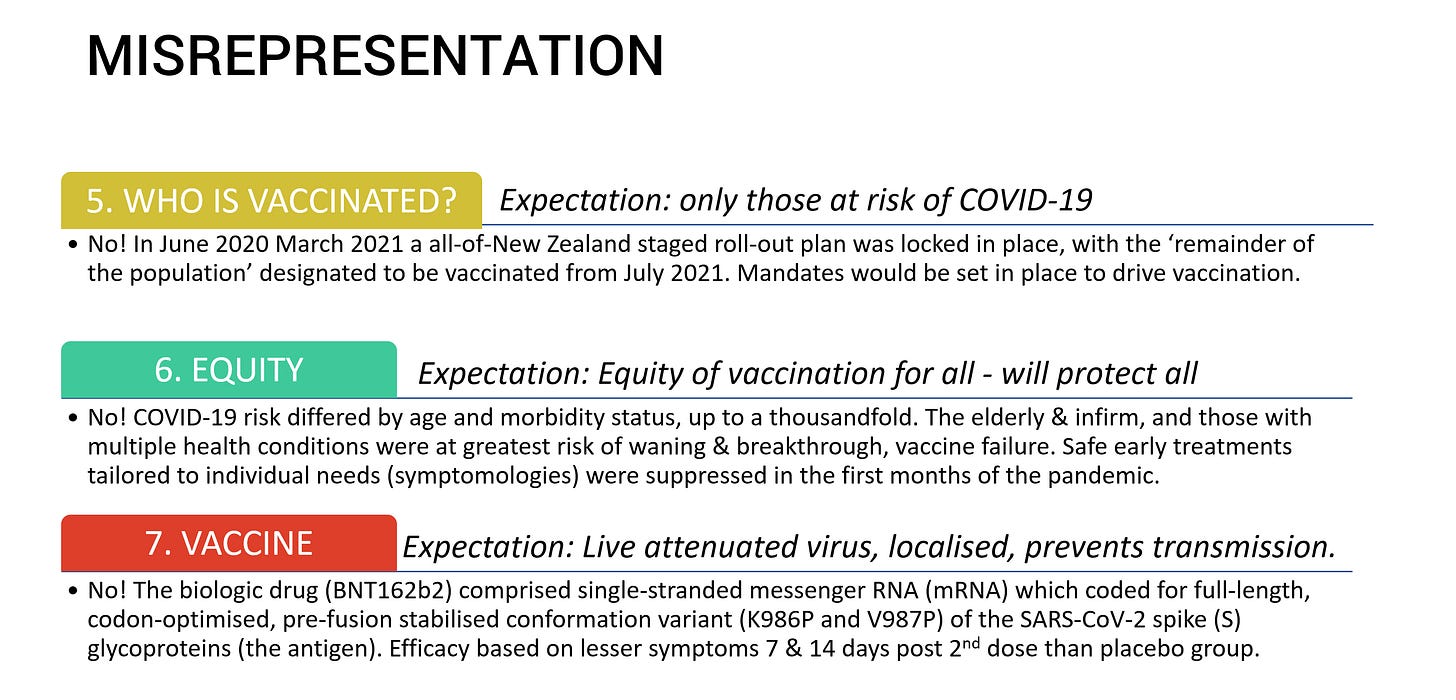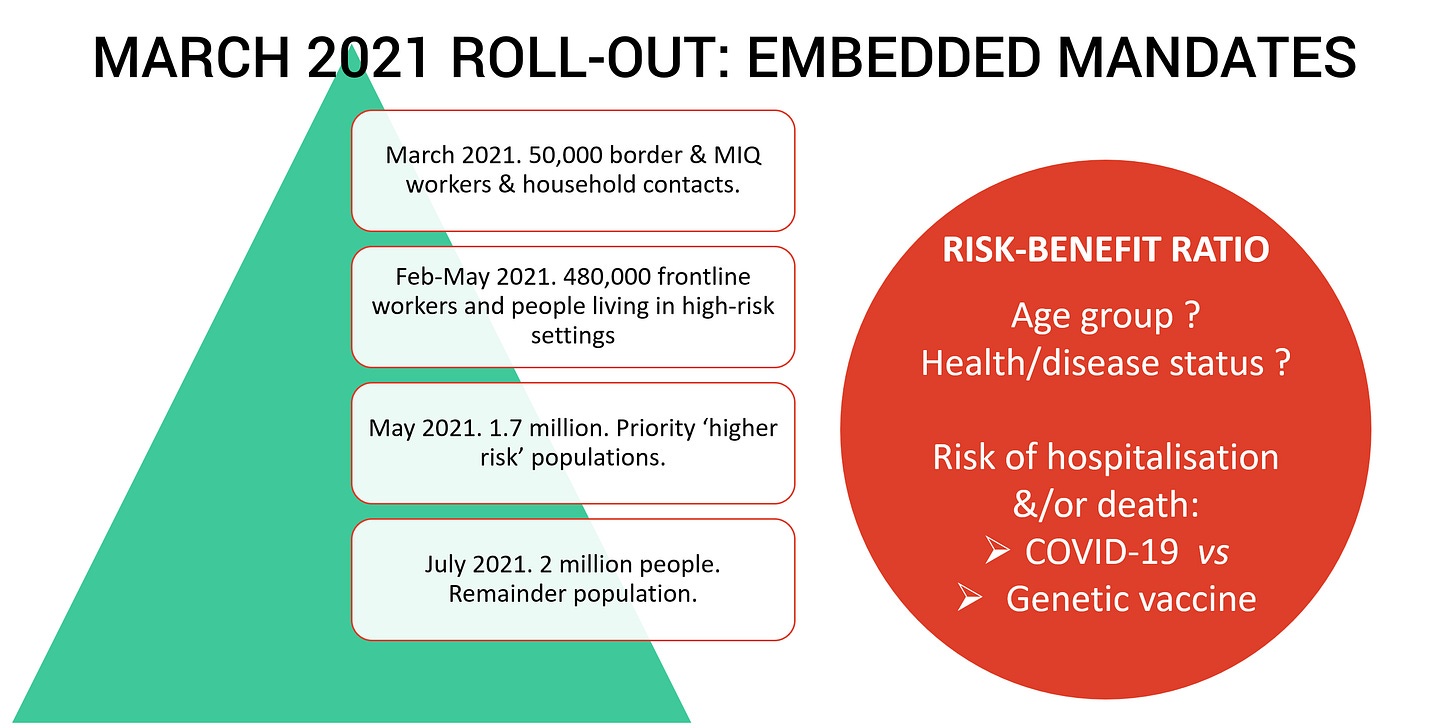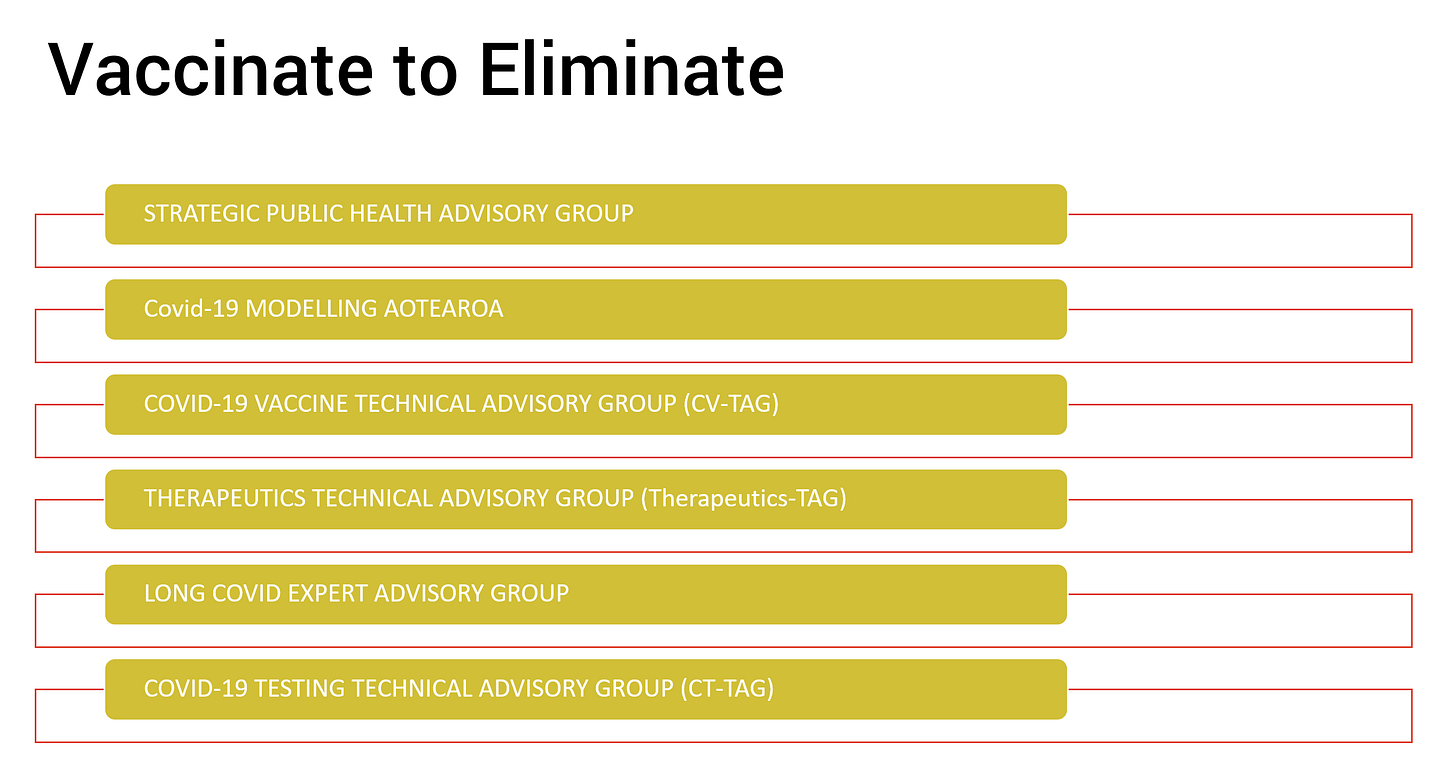TASA 2022 Conference paper presentation: SCIENCE FOR WHOM?
Manufacturing social consent for government policies through the control of science production.
The Australian Sociological Association (TASA) 2022 conference. Risk Societies thematic group session. Wednesday 30 November, 3.30-5.00pm
TITLE: SCIENCE FOR WHOM?
Manufacturing social consent for government policies through the control of science production.
Abstract: For decades the science diplomacy community have emphasised the importance of evidence-based science and the role of the honest broker. This presumes that the science produced and presented equally represents the complexity of issues and risks at stake.
However, I suggest, this is where the public-interest rift occurs, unarticulated by ‘honest brokers.’ Science is a collection of social processes. Who funds the science, sets the scope, and declares the values, ultimately structures what is produced. Science is social and political, from its conception, through production, peer review and publication. This discussion highlights this public interest rift. Like democracy, science should have space and the production of science should be at ‘arm’s length’ from those with the political or financial interest in the outcome. Without a robust scientific community, risk of policy capture will be amplified in times of crisis.
I discuss as a case study, the COVID-19 emergency, arguing that the New Zealand government failed to make a safe space for contested and uncomfortable knowledge. Narrow forms of science and directed data modelling shaped what was publicly known and considered politically legitimate. These processes effectively sabotaged the socio-political and scientific demosphere, establishing a troubling precedent for future public health emergencies.

Powerpoint images (below) can be found in this PDF:
TRANSCRIPT
In the twenty-first century, policies and laws integrate technologies and science into everyday life. For trust in decisions made by government officials to persist, civil society must have confidence that science conforms to norms of accountability and transparency and is not unduly biased. For this to occur, there must be secure channels where contradictory and controversial information can be produced, at arms’ length from political and financial interests. Science is a collection of social processes. Who funds the science, sets the scope, and declares the values, ultimately structures what is produced.
Today I will outline the methods by which the New Zealand government failed to make a safe space for contested and uncomfortable knowledge that could contradict the pre-established strategy of vaccination for all, during the COVID-19 pandemic. I will describe how a small cadre of experts and agencies both implemented and oversaw the vaccination programme, but controlled science and modelling.
Uncomfortable knowledge, as Raynor defined it, was knowledge, which, if revealed, presented a danger to institutions because such knowledge could potentially undermine institutional principles, arrangements and goals. The exclusion of information and knowledge – producing ignorance was a ‘necessary social achievement rather than as simple background failure to acquire, store and retrieve knowledge.’
My research explores institutional power, decision-making, knowledge and ignorance. Who controls the knowledge flows and sets the terms of reference for the scientists and data modellers? What information is considered legitimate or illegitimate, or taboo? There is little sociological literature exploring the production and use of science and knowledge throughout 2020-2022.
I propose that the initial risk framing and ongoing boundary work undertaken by key elites shaped what information was permitted, suppressed or taboo in such a way that strategically manufactured consent for global vaccination by a novel medical biotechnology.
I will firstly outline the seven initial risk representations that established the framing to secure consent for the ongoing vaccination programme. Then I will discuss the scientific taskforces and expert groups established to manage scientific information. A small cadre of experts shepherded specific, legitimated knowledges. These were the experts the legacy media turned to, for pandemic and vaccination information.
The 7 early risk representations, or key framings shaped public knowledge relating to risk. Scientific and modelling research aligned with these framings, no matter the contradictions in the peer reviewed literature.
Risk representation 0ne, the normative perspective of a pandemic, such as in the Spanish Influenza pandemic of 1918 did not apply. The 2020 definition did not require a high risk of hospitalisation and death for the normally healthy population. Hospitalisation and death as a necessary factor was removed in 2009. Instead, a pandemic was simply a widespread occurrence of an infectious agent …affecting a large number of people.’ (Porta 2014).
Therefore governments, officials and elected representatives could establish pandemic emergency status based on infection rate and case numbers – rather than the potential to drive hospitalisation and death.
Two. Over-estimation of death-rate by key institutions in early 2020 amplified population fear. Much of the global narrative was shaped by the information coming out of China, Italy and WHO advice. From the earliest, morbidity-related risk was weak. Despite this, scientists suggested substantial, even ‘draconian’ measures to limit mobility. For New Zealand and Australia data on risk was predominantly shaped by March modelling out of Imperial College London.
Imperial College London and the WHO vastly over-estimated the case and infection associated death rate. They failed to emphasise the absence of risk to the generally healthy population. An April 2020 WHO document stated that ‘The crude clinical case fatality is currently over 3%, increasing with age and rising to approximately 15% or higher in patients over 80 years of age.’ This was known to be incorrect at that date.[i] [ii]
Three. An ‘elimination’ narrative – meaning - to eliminate transmission of infection was constructed. To prevent new cases. This ignored that coronaviruses are highly transmissible and mutate frequently. It overlooked the fact that not all of the population were at risk. By June 2020, the vaccine (immunisation) strategy was agreed upon (CAB-20-MIN-0229.01).
Four. Off-patent therapeutics were excluded by demanding evidence from randomised control trials (RCTs). This extreme perspective ignored the fact that Cochrane research demonstrates that observational trials are equally successful. It was misleading as off-patent therapies have known toxicity. RCTs are more important for new drugs with unknown toxicity. Therefore, only expensive new drugs were legitimated while literature reviews of therapeutic interventions never happened.
Five. The March 2021 rollout plan to vaccinate the entire New Zealand population, was launched at the same time evidence on vaccine harm and vaccine failure was increasing. 50,000 border workers were first. Then 480,000 frontline health workers and people in high-risk settings, followed by 1.7 million priority individuals and then the remainder of the population, some 2 million people.
The Pfizer contract secured sufficient doses for the entire New Zealand population. It was signed by the Sovereign in right of New Zealand, the head of state. Prime Minister Ardern and the Hon Chris Hipkins were intimately involved in the deployment, reporting both the signing of the contract and the arrival of the first batches. Hipkins, as Minister for COVID-19 directed the production of mandates legislation.
Six. Equity was constructed in terms of free, fair and equitable access to COVID-19 vaccines. The pandemic policy conflated ‘health equity’ - with equity of medical treatment. Early epidemiological work confirmed that COVID-19 risk differed by age and morbidity status, up to a 1000-fold. It is a political act to demand that health equity require health to be protected and prevented. Biological difference demands treatment that reflects and responds to differing vulnerabilities and resiliencies. Contradictorily, the novel technology waned most quickly in our sickest, with complex inflammatory conditions, and multi-drug regimes.
Seven. The public remained ignorant regarding how the ‘Covid vaccine’ vastly differed from conventional vaccines. The biologic vaccine contained genetic information, the injectable coded for the spike protein. Vaccine recipient cells would then read the injected code and produce a viral antigen – the spike protein in an uncontrolled release. This technology had never been approved before this and early trials had been largely unsuccessful. The immune cells would recognise that antigen and induce an immunological response – resulting in the production of antibodies – but only to the tiny spike protein, not the full virus.
Traditional vaccines do not induce human cells to reproduce viral proteins.
Authorisation of the genetic vaccine was based on timely provision of clinical trial data (kids too) and supporting information. The 95% claim of efficacy was based on 7 days of no symptoms post-vaccination. Safety was based on data supplied by the manufacturer. Cardiac risk was identified from early days. The New Zealand public does not know when Pfizer’s February 2021 post-marketing report which reported 1223 deaths - was supplied to the government.
These key framings directed the trajectory of the global and local response. I will briefly outline the predominant scientific groups involved in COVID-19, and discuss how scientific information was managed and funded over this period.
The advice, information and legal orders were directed by the Ministry of Health, Department of Prime Minister and Cabinet, and by the Minister for COVID-19 and Director General of Health.
The Minister for COVID-19 was given the power to entrench mandates in law as secondary legislation, outside of Parliamentary process. From border workers to health care workers, to at home to the general population. There was no signal mechanism to trigger alerts for any age or risk group, to stop mandated injections. There was no feedback loop from the scientific community to that Minister reviewing age and health status, and risk of hospitalisation and death from the genetic vaccine, and risk of hospitalisation and death from COVID-19 by age and health status. Ministers’ work creating this legislation was decoupled from science information.
The pandemic case focus, eliminate and vaccinate narrative obfuscated the fact that the majority of the population was not at risk of hospitalisation and death. Yet the government recognised that severe adverse reactions could be relatively common.
In February 2021 the government expected severe adverse reactions to be less than 1.1 percent.[iii] This was an extraordinarily high adverse reaction rate, particularly if those who were receiving the vaccine were not at risk of the virus. For myocarditis alone, the evidence suggests that for young men the adverse incidents may be as high as 3%. This cohort had a 5/2,000,000 risk of death in 2020 when the virus most harmful.
Pfizer clinical trial data and the collegial review by global regulators of Pfizer’s private data formed the basis for approval by medicines regulators. The Australian Therapeutic Goods Administration’s early approval provided a basis for New Zealand to approve the biologic. The TGA exclusively relied on Pfizer’s clinical data. It seems like the agencies also relied on Risk Management Plans from the European Medical Agency. These plans were closely overseen by the manufacturer.
This produced a private clinical data regulatory round-a-bout. Decisions from foreign jurisdictions were used to justify support approval, and safety and efficacy claims by medicines regulators. Adverse event reporting was not mandatory but elective, even though this was a novel technology which had not finished clinical trial stage. Adverse event reporting systems are infamous for under-reporting.
The government set up technical advisory groups and a modelling group. These groups shaped New Zealand’s science-research output. Perhaps only 4 out of some 50 experts involved in modelling and policy were epidemiologists. New Zealand’s Covid-19 Technical Advisory Group did include one infectious disease epidemiologist, Professor Michael Baker.[iv]
The Covid-19 Modelling Aotearoa team were comprised of physicists, mathematicians, and data analysts.
A small cohort of 9 key elites were the senior authors of the majority of key papers which argued for the ZeroCovid elimination response, focussed on controlling cases and demonstrated that vaccines would lower case infection rates.
Elimination of the virus – of reducing case numbers to zero was led by Otago epidemiologists Michael Baker and Amanda Kvalsvig. They were joined by the current Minister for COVID-19 response Ayesha Verrall, whose signature is later to be found on the legal rules, the Orders that enforced mandates.
Sir David Skegg, chaired the Strategic Public Health Advisory Group. Skegg was appointed by the Minister for COVID-19. The groups terms of reference provided little space to contradict the roll-out strategy despite being tasked to provide independent advice. Indeed, a key paper demonstrated Skegg’s commitment to the roll-out, even as evidence of vaccine failure increased.
COVID-19 modelling was primarily undertaken by data, contagion modelling and complex systems experts. No experts in public health appeared to have a leading role in any of this modelling. The team were distinguished by an absence of public health epidemiology expertise.
This group was led by physicist Professor Shaun Hendy and then mathematics and statistics Professor Michael Plank. Teams were established to undertake branching process modelling, network contagion modelling, mobility modelling and data analytics.
In September 2021, senior scientists in the Modelling cohort believed that vaccination was the only way to achieve population immunity, and in the case of vaccine failure, they believed that a higher mortality burden would be the only likely consequence.
Until 2022 the Modelling team initially reported to the Ministry for Business, Innovation and Employment, then the Department of Prime Minister and Cabinet, not the health sector.
Expert advisory groups were established. The Vaccine Technical Advisory Group (or TAG) and Technical Advisory Group were chaired by Chief Scientist to the Minister of Health, Ian Town. In addition a Testing TAG; a Therapeutics TAG, and Long COVID TAG were established. None of these groups were tasked to identify risk benefit by age and health status. The Therapeutics and Long Covid groups were not tasked to surveil the literature to identify repurposed therapeutics and nutrients used in either home treatment for COVID-19; or treatment in hospital; or for treatment of Long Covid.
The only review of off-patent therapeutics were July 2021 Science Updates. While adverse events of antivirals with a long history of safe use were emphasised the science update was never updated to review the changing evidence concerning nutrients and off-patent antivirals, despite experts acknowledged the uncertain efficacy of boosters for immunocompromised populations.
Therapeutics group memos on the COVID-19: Advice for all health professionals did not consider early treatments more broadly. Evidence suggests the group could review supplied information (background material), and present commissioned pieces of work. Information was tightly controlled through ‘endorsed communication channels and methods’.
Meeting minutes of the Technical Advisory Group demonstrate that the focus of the group concerned booster take-up; updating of the vaccine pass; and management of approved therapeutics.
Throughout the pandemic methodological scientific reviews were not undertaken to triangulate the manufacturers claims of efficacy and safety; and deepen knowledge around adverse event reporting. Reviews of evidence for natural immunity, were never undertaken.
Other contradictions arose, a vaccinologist who is chair of industry group the Global Advisory Committee on Vaccine Safety, was tasked to review the data on myocarditis.[v] Ian Town then recommended medical exemptions for those with pre-existing myocarditis or after vaccine induced myocarditis injury, in November 2021, despite the increasing literature showing harm.
The Long COVID Group lacks expertise in chronic disease and nutrition.
The early framing, and the focus on clinical trial data consistently shaped the narrative around what information would be considered permitted, supressed and taboo.
Boundary work was undertaken by elites and media to silence opponents. Epidemiologists who argued against elimination were described as outcasts with baroque theories. This included dissenting epidemiologist Simon Thornley and colleagues. Michael Baker viewed their arguments as “almost scandalous” and “patently absurd”.
In conclusion, the combination of the seven key framings; and oversight of science and data modelling by a small cadre of key elites perpetuated a technique of control that effectively and inevitably silenced contradictory science that could undermine the vaccine roll-out programme. This then resulted in the informational or knowledge capture of the courts, the fourth estate and the shaming of dissenting experts.
REFERENCES
[i] Ioannidis J.P.A. (2020, April). Coronavirus disease 2019: The harms of exaggerated information and non-evidence-based measures. Received March 11, 2020. DOI: 10.1111/eci.13222
[ii] Ioannidis J.P.A. (2021) Infection fatality rate of COVID-19 inferred from seroprevalence data. Bull World Health Organ 2021;99:19–33F doi: http://dx.doi.org/10.2471/BLT.20.265892 (See ‘April’)
[iii] Roberts M & Bloomfield A. (2021, February, 10). Briefing Maximising uptake of COVID-19 vaccines in Tier 1
[iv] MoH (2021, June 2). COVID-19 Technical Advisory Group. https://www.health.govt.nz/about-ministry/leadership-ministry/expert-groups/covid-19-technical-advisory-group
[v] See in refs. Petousis-Harris, H., Background rates of myocarditis in New Zealand DRAFT. 2021. p. 1
















